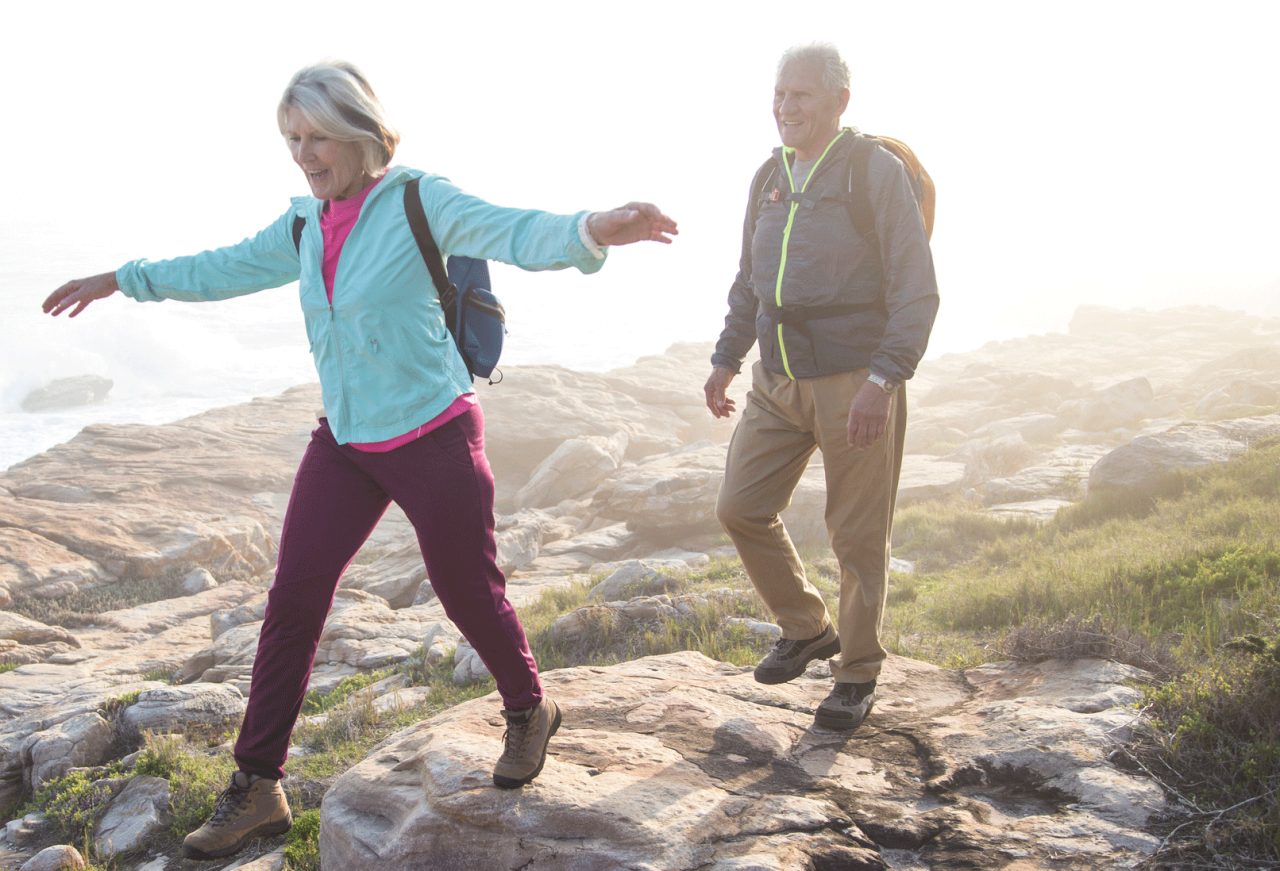How to Maintain Good Balance as You Age

Maintaining good mental and physical fitness helps to regulate your balance and to prevent falls that result in broken bones, head injuries, and other health problems.
Linda Victor was 64 when she had a serious fall while walking to work and another during a lunch break. Having two falls in short succession surprised the active senior.
“Inside I feel like I am 40 years old, but my body is going through these weird changes,’’ Victor told The Boston Globe. She kept working nonetheless, but with the help of a cane because she had to adjust the way she walked to maneuver safely.
A medical assessment revealed Victor’s falls and ongoing feeling of being off balance were due to a combination of arthritis in her ankles, knees, and hips, coupled with hearing loss. Treatment for her assorted problems helped her avoid more falls. That’s important because, while taking a tumble can cause minor bruises, it can also result in broken bones, head injuries, and other serious health problems.
YOU MIGHT ALSO LIKE: Balance Exercises for Seniors
While people of any age can experience falls — and possibly have medical issues that may raise the risk of falling — in general, you have a higher risk of falls as you age.
Causes of balance problems
Neurological disorders (including migraine headaches), poorly regulated blood sugar, reactions to medications, and other health problems can cause dizziness and imbalance. Having appropriate medical treatment for such conditions can help prevent falls, including serious ones.
For example, over 450,000 Americans suffer serious head injuries related to falls — and 40 to 85 percent of these people report having dizziness or balance disorders, according to the University of Washington’s Dizziness and Balance Center.
A study by Johns Hopkins University researchers found over 36 percent of U.S. adults aged 40 years and older likely have some degree of vestibular dysfunction (the body’s internal balance system in your ear), which can result in an increased risk of falls, especially in elders.
An inner ear infection can sometimes disrupt your internal balance system and lead to falls. So can benign positional vertigo (BPPV), the most common cause of vertigo (feeling the room is spinning or feeling off-balance when you look up or down).
While it can affect people of all ages, raising the risk of falls, BPPV is most common in people over the age of 60, according to Johns Hopkins balance experts. It occurs when tiny calcium crystals (otoconia), normally located in a sensory organ inside your inner ear called the utricle, become dislodged and disrupt the internal balance system in your inner ear.
Not surprisingly, the sensation of feeling the room moving or spinning can result in falls. In a column for The New York Times, longtime runner Alex Hutchinson wrote, after experiencing his own “wobbliness” despite regular exercise, that just remaining upright is a lot more complicated than you realize until your internal balance system is out of whack.
Physical therapy to reposition the calcium crystals in your inner ear, via special head maneuvers, can often treat BPPV — but BPPV can sometimes linger for months and recur.
Aging, unfortunately, raises your risk of Alzheimer's disease and other forms of dementia, which cloud judgment and the ability to proactively work to improve balance. But age-related mild cognitive impairment, which affects 10 to 20 percent of older U.S. adults, is different.
What you can do
While statistics show about one in four Americans who are 65 or older experience a fall every year, that doesn’t mean falls are an inevitable part of aging for most adults, according to the National Council on Aging.
The best way is to learn the risk factors for falls and what you can do about many of them.
For example, exercising regularly to strengthen muscles and stay as flexible as possible is important. Physical fitness plays a large role in helping you maintain balance and avoid falls.
Have your vision checked yearly.
Do a safety check of your home to make sure there are no danger spots for falls, such as loose rugs or stairs or bathrooms with no handrails.
Regular medical check-ups can head off medical problems and prevent injuries from falls.
Karen Anne Peterson has worked with elders for decades, helping them with exercise to improve balance. Through her work, Peterson and colleagues developed a program of exercises known as Move with Balance, which combines physical movement with sensory training (vision and hearing).
The goal, Peterson describes in her book. “Move with Balance: Healthy Aging Activities for Mind and Body,” is to develop a strong connection between the body and the brain and “change the elder’s physiology on a very deep level.”
The concept is based on the growing understanding of brain plasticity (the brain’s ability to change and grow throughout life with precise, applied stimulation). Stimulation can retrain the brains of older adults through movement and sensory experiences to improve balance, according to Peterson, which can lower the risk of falls.
Updated:
December 08, 2022
Reviewed By:
Christopher Nystuen, MD, MBA and Janet O'Dell, RN